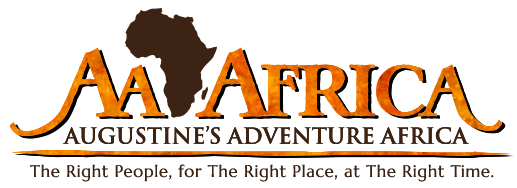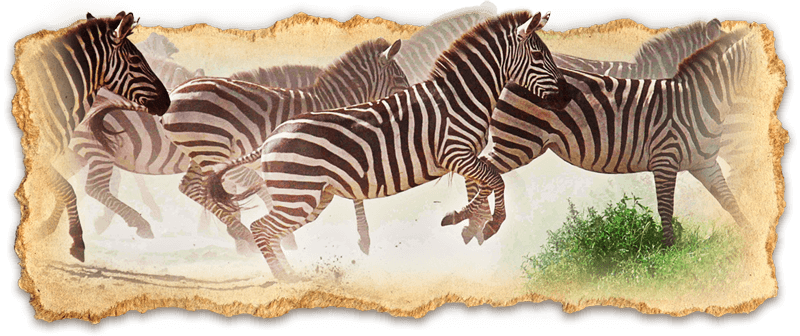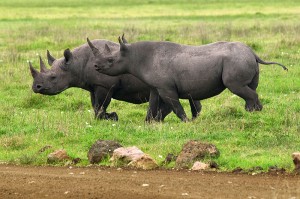One-Week Nyumbu Escape
~ Deluxe ~
~ Deluxe ~
The best season for this departure is December—March
Safari Overview
Our Deluxe One-Week Nyumbu Safari offers accommodations at deluxe lodges and tented camps and presents the occasion to learn and discover the likes of Tanzania’s most popular destinations and sightings, such as the Plains of Ndutu, Central Serengeti, and the lush wildlife of Ngorongoro Crater.
7 days
6 nights
- Safari Highlights:
- An incredible opportunity to witness the Wildebeest Migration.
- See a great divergence of carnivores in Ndutu Area of Southeast Serengeti.
- Behold enormous schools of hippos (and perhaps a leopard) in Central Serengeti.
- Capture the abundance and diversity of wildlife including the rare black rhino in the Ngorongoro Crater.
- Discover historical local culture with a stop at Maasai Village.
- Revel in 3-overnights and 2.5-days of game drive in the Serengeti Plains.
- Enjoy a week full of breathtaking sightings in Tanzania’s most popular destinations.
Itinerary
Deluxe One-Week Nyumbu Safari - Discover Northern Tanzania
Day 1
Arrive in Arusha, Tanzania
You will arrive at Kilimanjaro International Airport (JRO) by your international flight. Your driver guide will meet you at you at the airport and drive you to Ilboru Safari Lodge (or similar) for overnight (Bed & Breakfast).
About Ilboru Safari Lodge
Day 2
Ndutu Plains of Southeast Serengeti
After breakfast, drive straight to Ndutu Plains in Southeast Serengeti with picnic lunch. In the afternoon, get ready for a game drive in the Ndutu Area! Late afternoon, drive to your lodge. Dinner and overnight will be at Ndutu Safari Lodge (or similar).
About Ndutu Plains
About Ndutu Safari Lodge
Day 3
Game Drives in Ndutu
Early-morning and afternoon game drives continue in the Ndutu Area with lunch being served at your lodge. Dinner and overnight will be at Ndutu Safari Lodge (or similar).
Day 4
Game Drives in the Serengeti
Rise and shine for an early-morning game drive and then at 8:30 AM, return to your lodge for breakfast before checkout. Drive to Central Serengeti with picnic lunch for an afternoon game drive. Dinner and overnight will be at Serengeti Kati Kati Tented Camp (or similar).
About Central Serengeti
About Serengeti Kati Kati Tented Camp
Day 5
Karatu and Maasai Village
After breakfast, journey on with a game drive en route to Karatu. At noon, enjoy your picnic lunch and visit Maasai Village. In the PM, proceed to your lodge. Dinner and overnight will be at Ngorongoro Farm House Valley (or similar).
About Maasai Village
About Ngorongoro Farm House Valley
Day 6
Game Drives in the Crater
After an early breakfast, drive to Ngorongoro Crater for a full-day game drive with a picnic lunch. Late afternoon, return to your lodge. Dinner and overnight will be at Ngorongoro Farm House Valley (or similar).
About Ngorongoro Crater
Day 7
Return to Arusha
After breakfast, you will be driven back to Arusha where you’ll have lunch and a dayroom at Kibo Palace Hotel. In the evening, you’ll be transferred to Kilimanjaro International Airport (JRO) for your international flight back home.
- Inclusions:
- Respective accommodations or similar throughout as indicated.
- 3-meals a day as shown (except Day 1 at Bed & Breakfast).
- All game drives with photographic roof hatch land cruiser operated by a professional driver guide.
- All transfers as per the itinerary.
- Complimentary bottled water during game drives.
- Tips to waiters.
- All national park entry fees and Ngorongoro Crater service fees.
- Visit to Maasai Village.
- Exclusions:
- Entry VISA and local airport tax.
- Personal and baggage insurance.
- Excess baggage charges levied by airline.
- Meals and beverages other than specified.
- Tips to your driver guide.
- Tips to porters.
- Cost for anything not mentioned on the list above.
Accommodations
Our One-Week Nyumbu SafariFeatures Deluxe Accommodations
Ilboru Safari Lodge - Arusha
Offering an outdoor pool and a restaurant, Ilboru Safari Lodge is conveniently located in Arusha, just 27.3 miles from Kilimanjaro International Airport (JRO). An array of activities can be enjoyed on site or in the surroundings, including golfing. The deluxe accommodation features patios, private bathrooms and a delightful garden view from your room. At Ilboru Safari Lodge you will also find a 24-hour front desk, a lush garden, and barbecue facilities. Other resources offered at the property include meeting facilities, a shared lounge, luggage storage, and free WiFi. [learn more]
Ndutu Safari Lodge - Serengeti National Park
Built in 1960's by hunter George Dove, this lodge is located in the Ngorongoro Conservation Area near South-eastern Serengeti. It's a prime location to view the breeding grounds of thousands of Wildebeest. Ndutu Safari Lodge consists of 34 en-suite stone cottages - each with it’s own verandah that overlooks Lake Ndutu - and extend from the central, open-sided bar, lounge and dining room. Among the rooms are 10 doubles, 5 triples, and 1 familty room (accommodating up to 2 adults and 2 children). [learn more]
Serengeti Kati Kati Tented Camp - Serengeti National Park
Serengeti Kati Kati Tented Camp is a mobile tented camp in Central Serengeti, strategically located to cover the vast Serengeti Plains. The camp offers comfortable accommodation and a unique opportunity to enjoy a real safari camp experience. The camp is only a two hour scenic drive from Olduvai Gorge Museum and Grumeti River. A cozy mess tent is located in the center of the camp where meals are served. The campfire is ready every evening for appetizers and snacks before dinner. Throughout the camp there are 10 tents with en suite facilities. [learn more]
Ngorongoro Farm House - Karatu (and Near Ngorongoro Area)
Ngorongoro Farm House is a small, exclusive lodge facing the Oldeani Volcano. It nestles in a 500 acre coffee farm, located just 4 km from the Lolduare entrance to the Ngorongoro Conservation Area. Featuring 52 Large Double-chalet Rooms. Of the Standard Rooms there are 25 twins, 17 doubles (king bed), 7 triples, 6 interconected rooms, en-suite bathrooms with built in showers, and mosquito nets. Of the Suite Rooms there are 3 doubles (king bed). All Rooms have large beds, a private verandah, walkways, and telephones. [learn more]
Offering an outdoor pool and a restaurant, Ilboru Safari Lodge is conveniently located in Arusha, just 27.3 miles from Kilimanjaro International Airport (JRO). An array of activities can be enjoyed on site or in the surroundings, including golfing. The deluxe accommodation features patios, private bathrooms and a delightful garden view from your room. At Ilboru Safari Lodge you will also find a 24-hour front desk, a lush garden, and barbecue facilities. Other resources offered at the property include meeting facilities, a shared lounge, luggage storage, and free WiFi. [learn more]
Ndutu Safari Lodge - Serengeti National Park
Built in 1960's by hunter George Dove, this lodge is located in the Ngorongoro Conservation Area near South-eastern Serengeti. It's a prime location to view the breeding grounds of thousands of Wildebeest. Ndutu Safari Lodge consists of 34 en-suite stone cottages - each with it’s own verandah that overlooks Lake Ndutu - and extend from the central, open-sided bar, lounge and dining room. Among the rooms are 10 doubles, 5 triples, and 1 familty room (accommodating up to 2 adults and 2 children). [learn more]
Serengeti Kati Kati Tented Camp - Serengeti National Park
Serengeti Kati Kati Tented Camp is a mobile tented camp in Central Serengeti, strategically located to cover the vast Serengeti Plains. The camp offers comfortable accommodation and a unique opportunity to enjoy a real safari camp experience. The camp is only a two hour scenic drive from Olduvai Gorge Museum and Grumeti River. A cozy mess tent is located in the center of the camp where meals are served. The campfire is ready every evening for appetizers and snacks before dinner. Throughout the camp there are 10 tents with en suite facilities. [learn more]
Ngorongoro Farm House - Karatu (and Near Ngorongoro Area)
Ngorongoro Farm House is a small, exclusive lodge facing the Oldeani Volcano. It nestles in a 500 acre coffee farm, located just 4 km from the Lolduare entrance to the Ngorongoro Conservation Area. Featuring 52 Large Double-chalet Rooms. Of the Standard Rooms there are 25 twins, 17 doubles (king bed), 7 triples, 6 interconected rooms, en-suite bathrooms with built in showers, and mosquito nets. Of the Suite Rooms there are 3 doubles (king bed). All Rooms have large beds, a private verandah, walkways, and telephones. [learn more]
Destinations
Discover the World's Abundant Wildlife in Northern Tanzania
Ndutu Plains (Southern Serengeti)
Serengeti means endless plain in the Maasai language. The southern plain is where this name comes from. The vast grassy plains stretch as far as your eyes can see. It is in the southeast plain of Serengeti where the expanse herds of wildebeest migration stay from December through April. 90% of adult female wildebeest give birth in this plain during February. During this time predators such as lions, cheetahs and hyenas are seen in good numbers as their prey is in abundance.
Central Serengeti
Seronera region is the backbone of the central Serengeti ecosystem in terms of fauna that it accommodates during the dry season. The network of rivers and marshland ensure year-round water supplies that make life easier for the resident predators and their prey. The area is known for prides of lions, leopards and other wildlife. The rock outcrop best known as Kopjes, make the landscape even more impressive. It is not unusual to see predators such as lions and leopards perched on top of Kopjes sunbathing and enjoying the view.
Maasai Village
The traditional Maasai Village is called a Manyata. This is where different Maasai families live with their livestock. The Livestock live in the middle of thick Acacia thorny fences that protect them from any possible predator attacks. The visit to these villages give guests an opportunity to learn the lifestyle of Maasai people including their culture and tradition. [learn more]
Ngorongoro Crater
The Ngorongoro Crater is only 3% of the total area of Ngorongoro Conservation Area (NCA), but it is home to more than 75% of all the game animals found in NCA. Technically known as a caldera, Ngorongoro crater is the largest unflooded and unbroken caldera in the world with 19.2 km in diameter, 2000 feet deep, and 102 sq miles in area. The rich pasture and permanent water of the crater floor supports a large resident population of wildlife of up to 25,000 predominantly grazing animals. These include wildebeest, zebra, buffalo, kongoni, gazelle, warthog and eland. The swamps and forest provide additional resources for hippo, elephant, waterbuck, reedbuck, and bushbuck, baboons and Vervet monkeys. The steep inner slopes provide habitat for dik-dik and the rare Mountain reedbuck.
Jackals thrive in the crater and bat-eared foxes live in the short grass area. Predatory animals such as lion, leopard, cheetah and serval cats live off the abundant wildlife; and large packs of hyenas roam the crater, making their own kills and scavenging from others. The crater is a dynamic and constantly changing ecosystem and the numbers and proportion of some animals including lions and Black rhinos have fluctuated considerably over the past 30 years. Thanks to anti-poaching patrols in the crater and the whole ecosystem, the Black rhino population is coming back. Ngorongoro crater is one of the few places in East Africa where visitors can see a rhino. [learn more]
Serengeti means endless plain in the Maasai language. The southern plain is where this name comes from. The vast grassy plains stretch as far as your eyes can see. It is in the southeast plain of Serengeti where the expanse herds of wildebeest migration stay from December through April. 90% of adult female wildebeest give birth in this plain during February. During this time predators such as lions, cheetahs and hyenas are seen in good numbers as their prey is in abundance.
Central Serengeti
Seronera region is the backbone of the central Serengeti ecosystem in terms of fauna that it accommodates during the dry season. The network of rivers and marshland ensure year-round water supplies that make life easier for the resident predators and their prey. The area is known for prides of lions, leopards and other wildlife. The rock outcrop best known as Kopjes, make the landscape even more impressive. It is not unusual to see predators such as lions and leopards perched on top of Kopjes sunbathing and enjoying the view.
Maasai Village
The traditional Maasai Village is called a Manyata. This is where different Maasai families live with their livestock. The Livestock live in the middle of thick Acacia thorny fences that protect them from any possible predator attacks. The visit to these villages give guests an opportunity to learn the lifestyle of Maasai people including their culture and tradition. [learn more]
Ngorongoro Crater
The Ngorongoro Crater is only 3% of the total area of Ngorongoro Conservation Area (NCA), but it is home to more than 75% of all the game animals found in NCA. Technically known as a caldera, Ngorongoro crater is the largest unflooded and unbroken caldera in the world with 19.2 km in diameter, 2000 feet deep, and 102 sq miles in area. The rich pasture and permanent water of the crater floor supports a large resident population of wildlife of up to 25,000 predominantly grazing animals. These include wildebeest, zebra, buffalo, kongoni, gazelle, warthog and eland. The swamps and forest provide additional resources for hippo, elephant, waterbuck, reedbuck, and bushbuck, baboons and Vervet monkeys. The steep inner slopes provide habitat for dik-dik and the rare Mountain reedbuck.
Jackals thrive in the crater and bat-eared foxes live in the short grass area. Predatory animals such as lion, leopard, cheetah and serval cats live off the abundant wildlife; and large packs of hyenas roam the crater, making their own kills and scavenging from others. The crater is a dynamic and constantly changing ecosystem and the numbers and proportion of some animals including lions and Black rhinos have fluctuated considerably over the past 30 years. Thanks to anti-poaching patrols in the crater and the whole ecosystem, the Black rhino population is coming back. Ngorongoro crater is one of the few places in East Africa where visitors can see a rhino. [learn more]
Yes, I'm interested!
Have questions? Ready to book? Drop us a line and we'll get right back with you!
Use this form to book the Deluxe One-Week Nyumbu Escape.
You may customize a Signature Safari Itinerary to your liking, or simply design an itinerary from scratch!












